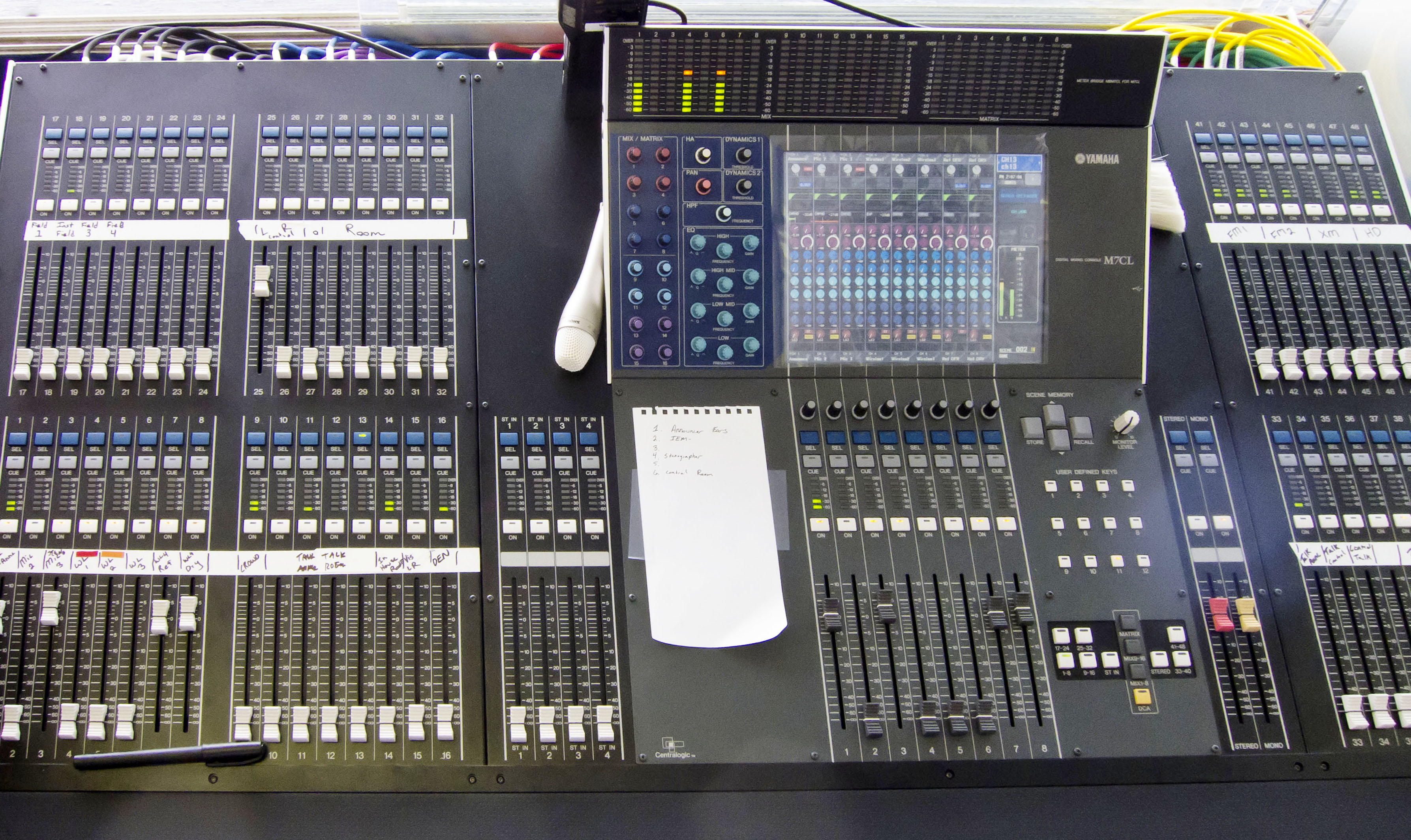What Did You Expect?
Apr 01, 2006 04:54 PM
Welcome to the first edition of an informal look at the world from the view of an audio engineer. Now I know what you’re thinking - all that engineers are interested in are the latest electronic toys and model numbers, we say cryptic things to each other like “that A-I-F-F needs to be minus twenty D-B before you set your levels to zero,” and we can’t possibly have a grasp on the “real world” going on outside our padded walls that we call the studio.
Welcome to the first edition of an informal look at the world from the view of an audio engineer. Now I know what you’re thinking - all that engineers are interested in are the latest electronic toys and model numbers, we say cryptic things to each other like “that A-I-F-F needs to be minus twenty D-B before you set your levels to zero,” and we can’t possibly have a grasp on the “real world” going on outside our padded walls that we call the studio.
"That A-I-F-F needs to be minus twenty D-B before you set your levels to zero"
Well, I have to admit that I do like new gadgets, I do talk the lingo, and those that know me may agree that I’m best kept in a room with padded walls. But the real reason that most of us are in this profession is that we thrive on the creative process. I can’t speak for every engineer, but for me, the quest to create a sound that I hear in my head or an emotion that I want the listener to feel drives me to find the right tool. If I haven’t ever tried create this sound, I try to figure out how. That sometimes leads me down a path of intense research in the “gadget world,” learning about new equipment or software. Other times it leads me to investigate techniques that other engineers might have stumbled upon (and are willing to share). But more often that not, my focus is on listener perception and expectations. What does and doesn’t the listener expect to hear.
Most listener expectations are based on prior experiences. When recordings were first made, a mechanical device was used that crudely etched a wavy groove onto the surface of a rotating wax cylinder. When these recordings were played back to astonished listeners, they heard a person’s voice miraculously coming from a funnel on top of a box. Their expectations were “zero” - they had nothing outside of real-life experience to compare the recording to.
When we listen to those old wax recordings today, the opposite is true. We hear the imperfections of the mechanical device - the scratchy groove, the motor turning, the strange hollow sound from the horn. We have to strain to hear the actual voice that was recorded. We’re astonished that anyone could bare to listen to one of these.
But today, we expect noise-free recordings with layered sounds, strong and present dialog, and perfectly blended music. Anything less and it’s considered amateurish, cheap, and inferior. Especially if you just paid $25 for movie tickets and another $35 in concessions for the whole family. The average movie goer isn’t sitting there critiquing the sound, they’re enjoying the movie. But when something’s out of kilter - missing or hard to understand dialog, hums or buzzes, or just plain awful audio - they notice. They’ll also get their attention pulled away from the reason they’re there - to see a story being told.
This brings us back to listener expectations. You don’t expect to hear the same attention to sound on your local newscast that you do in the movie theater. But you do expect to hear everything’s that being said. What should you expect on your soundtrack you’re trying to create? At the very least, you should give the listener what they expect. Unlike listeners from over a century ago that had no prior electronic listening experiences, today’s listeners can easily blend experiences from the real world and the artificially created. Sometimes soundtracks can fool listeners into thinking a generated sound is a naturally occurring one. For instance, one time while walking through the Cincinnati Zoo’s Jungle Trails exhibit, I heard wild bird calls in the distant. As I got closer, I realized that they were being played from a small speaker behind a tree. We humans are very experienced listeners, and it takes a lot of effort to fool us. Which is why most sound designers go for the opposite: “Okay, we can’t fool them, but we can make it bigger than life!”
The Terminator movies are famous for making things bigger than life - the plot, the star, the scenery, the sounds! After movies like this, listeners expect things to be big. Sound designers use tricks to make truck engines loud and menacing. Occasionally they layer throaty sounds of trucks with other naturally occurring sounds, like lion roars. Sound designer Ben Burtt (Star Wars, Willow) did that with the Nazi trucks in Indiana Jones and the Raiders of the Lost Ark. Other times, sound designers try to emulate real life as close as possible. In The Conversation (1974) sound editor Walter Murch made a hard to understand portion of a secretly recorded conversation muffled. As the movie progressed, the recordist (Gene Hackman) played the passage over and over while making adjustments to the sound quality. By the end of the movie he, and the audience, could clearly hear the words being spoken. But were they really the actual words or ones that Gene Hackman (and the audience) wanted to hear?
“Okay, we can’t fool them, but we can make it bigger than life!”
So what do listeners expect to hear? If they want accuracy, then technically bliss recordings fit the bill. If they want entertainment, they’re easily manipulated into hearing things that aren’t exactly like real life. If they are enjoying an outing to a park or other attraction, they aren’t surprised when they’re tricked into thinking a manufactured sound is real. Sound engineers strive to create sounds that fit the audience while allowing the story to be told, the message to be heard, or the performance to shine. This is really what listeners expect to hear. And this is why you expect us engineers to be kept in rooms with padded walls.
Neil Kesterson is the owner of Dynamix Productions in Lexington, KY. He has been kept in a room with padded walls for over twenty years.
 Listen to the podcast here.
Listen to the podcast here.
 Subscribe using iTunes here.
Subscribe using iTunes here.

Subscribe using Podfeed.net here
Subscribe by copying and pasting the "RSS Feed" link at the top left of this page into your podcast player.Tags: Dynamix Productions, Neil Kesterson, The Terminator, termintaor, Audio, Audio engineer, Aiff, Aif, Decibel




 Subscribe using Podfeed.net here
Subscribe using Podfeed.net here